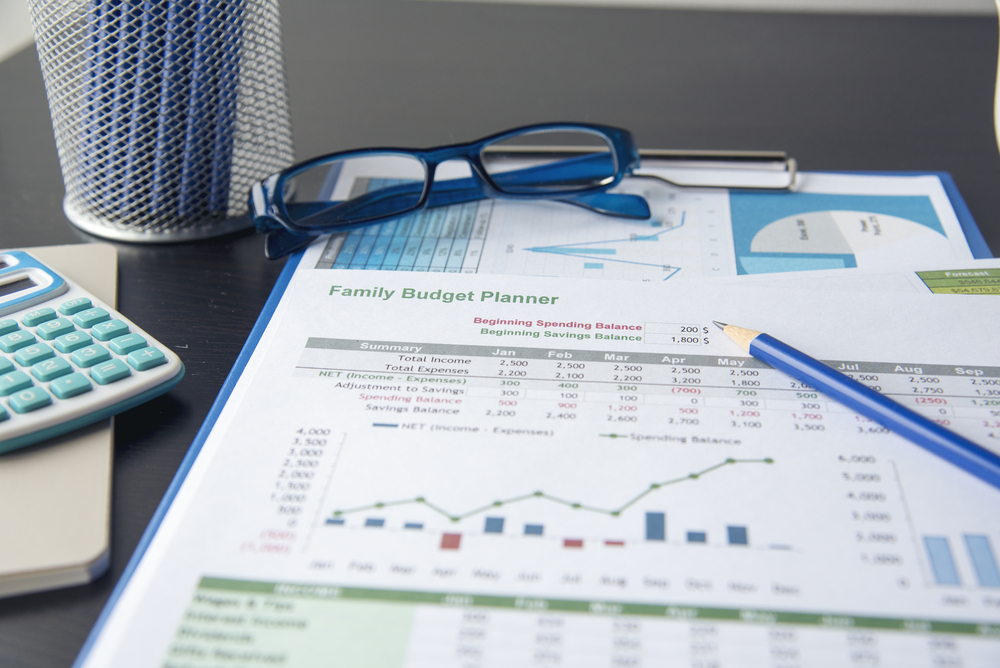 Creating a household budget plan doesn’t have to be hard. It takes a little bit of work, but when you can create a budget plan, you’ll be able to prioritize spending, reduce debt and increase savings and reach your financial goals.
Creating a household budget plan doesn’t have to be hard. It takes a little bit of work, but when you can create a budget plan, you’ll be able to prioritize spending, reduce debt and increase savings and reach your financial goals.
Ready to get started. Here are six easy steps that will help you create a budget plan in the new year.
1. Determine Your Net Income
As we all know too well, there is a difference between income and take-home pay. Payroll taxes and other deductions can add up quickly. When creating a budget plan, use your take-home pay as a starting point. If you have other income streams, include them with caution. Don’t include occasional income, instead start with money that you can depend on.
2. Calculate Your Expenses
This is the hardest part of the budgeting process. Start by adding up your fixed monthly expenses such as housing, utilities, transportation or car payments, credit card payments, etc. Next look through your daily expenses, and try to determine how much you’re spending per month on expenses such as food, clothes, entertainment, etc. These numbers will fluctuate from month to month, but try to determine a monthly average.
3. Set Goals
Now set your income and expenses aside for a moment. Ask yourself what do you want to accomplish by creating a budget. Try to be as specific as possible. Some goals are:
- I want to be able to pay all my bills and still set $200 aside every month in savings.
- I want to pay down my credit card balances in three to five years.
- I want to be able to invest more every year in my retirement, or child’s college fund.
4. Create Categories
Now that you have a goal, it’s time to figure out how to meet that goal. That starts by breaking down your expenses into categories. For example, your car payment, insurance, gas and maintenance charges should all be classified under auto or transportation. Rent or mortgage and basic utilities like water, gas, and electricity should be classified under Housing.
Once you’ve created your categories, see how much of your total monthly expenses fall into each category. This will allow you to see where your money is going and can help you to start prioritizing how you spend it.
5. The 50-30-20 Rule
Many experts recommend the 50-30-20 rule. That means:
- Your needs should be limited to just 50 percent of your net income.
- Your wants should take up not more than 30 percent of your net income.
- Your savings and debt repayments should equal at least 20 percent of your net income.
Look at your categories and see where they fall in relation to this formula. If you’re finding that your wants are taking up more than 30 percent of your income, you may want to look for ways to trim your spending. If your needs are taking up more than 50 percent of your income, it may be a sign that you need to economize or downsize. If your savings and debt repayments are less than 20 percent of income, you may want to try to find ways to save and redirect those funds toward savings and debt repayment.
6. Create a System
Once you’ve started, don’t stop. You should be tracking your net income and expenses every month to make sure you’re sticking to your budget. When tracking, always start with your monthly income and deduct your expenses. Knowing how much you have left will allow you to make smarter choices.
A budget doesn’t happen overnight; you should commit to your budget for at least a year at a time. If your situation has changed, you can make adjustments.
Looking for more help creating a budget plan, want to reduce your monthly credit card bills? Schedule a free counseling session today or call us at 800-920-2262.





